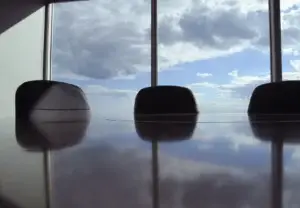Long-Term Office Leasing issues
When tenants and landlords negotiate an office lease, the length of the term has become one of today’s biggest obstacles.
Landlords have recently experienced extraordinary cost increases from sheetrock and wall coverings to ceiling tiles and electric outlets, not to mention inflated labor costs. As a result, landlords seek lease terms of 7 to 10 years to recoup their upfront investments. On the other hand, Tenants, having experienced the pandemic’s impact on traditional working patterns and the emerging economic uncertainty, are hesitant to commit to long-term leases. However, if the decision is to enter a long-term lease, it is essential to negotiate the following lease clauses:
Escalations
Longer lease terms magnify the financial impact of all rent escalations. For example, for every 7,500 rentable square feet at a base rental of $30.00 per rentable square foot, the additional 50 basis points between a 3.5% annual increase and a 4.0% increase equate to an additional $60,000 over a 10-year term. To mitigate the cumulative, compounding effect of this rent escalation, we suggest negotiating a fixed annual increase, i.e., $1.00 per rentable square foot per year, especially toward the back end of the term.
Sublease/Assignment
There is nearly a 100% probability that during a 7 or 10-year term, the economy will enter a recession. In response, you may have to jettison a portion or all of your office space. As a result, the importance of having an effective exit strategy is directly proportional to the lease term. Consequently, an underlying insurance policy is to negotiate for the least restrictive assignment/sublease clause.
Work Letter
An indirect consequence of a long-term lease is the advantage landlords gain by stretching out the time between refurbishing the suite. After 5 years, carpets and walls can become stained, worn, spotted, or faded. If you sign a long-term lease with ‘building standard’ finishes, remember to include a provision in your lease requiring the landlord, on or about the 5th anniversary, to replace worn or stained carpeting and re-paint the suite. If you take on this responsibility, it could cost $10.00+ per square foot. Using the example of a 7,500-square-foot suite, refurbishing your suite could set you back $75,000. Getting a month’s free rent in the 6th lease year could help compensate for this cash outlay.
Security Deposit
Here, the cumulative compounding effect of interest works in your favor if you negotiate to have your security deposit placed in an FDIC, interest-bearing account. When the lease expires and the time comes to recoup your earnings, remember to ask for the return of your security deposit within 30 days of the lease expiration. (Curiously, tenants often need to be reminded to request the return of their security deposit.)
Summary
When negotiating a lease in today’s real estate market, a prudent tenant must carefully weigh the cost/benefit of lease terms that approach 10 years. Even though a long-term lease provides stability, it also entails greater financial risk. Accordingly, refrain from being bashful when negotiating specific escalation clauses. A tenant can be better positioned to address unexpected changes in its business environment by mitigating the exorbitant financial and operational risks inherent in some of these clauses. Tomorrow’s successes…and mistakes…are determined by how well a Tenant negotiates its office lease today.




